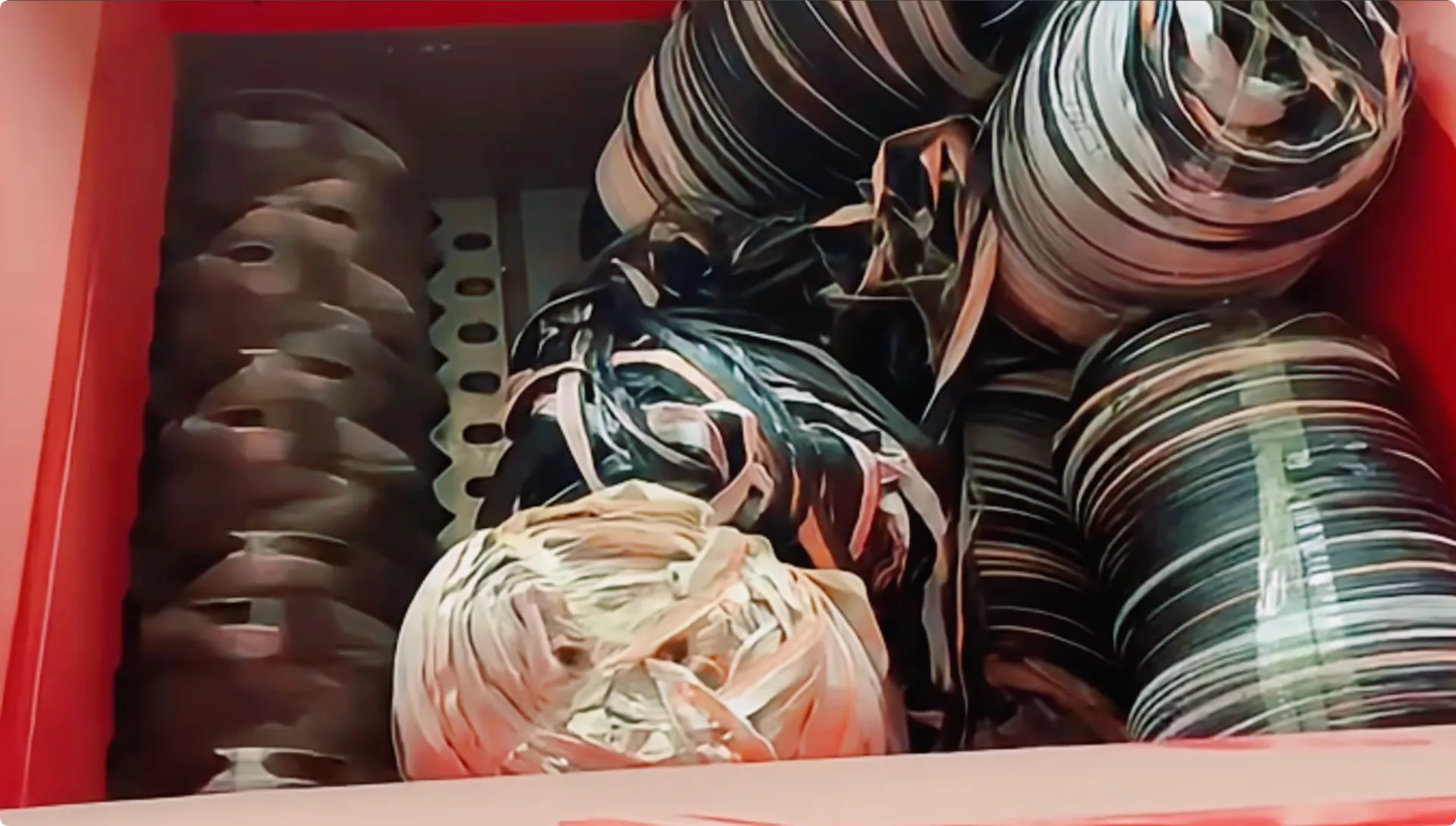Textile & Fabric Shredders: Your Ultimate Guide to Industrial Recycling
Textile shredding is a cornerstone of the modern recycling and waste management industry. By efficiently breaking down fabrics into smaller, reusable fibers, this process is essential for repurposing textile waste and promoting environmental sustainability. This guide explores how advanced shredding technology can transform your operations.
How Rumtoo Textile Shredders Drive Efficiency
Rumtoo offers state-of-the-art textile shredders engineered to master the challenges of fabric processing. Our machines utilize high-torque, hardened steel blades to cut through a vast range of materials—from clothing and upholstery to tough industrial fabrics. Designed for high-volume, continuous operation, Rumtoo shredders deliver consistently uniform particles, perfectly prepared for their next life cycle.
Key Benefits of Integrating a Rumtoo Shredder
Maximize Environmental Impact
Dramatically reduce your landfill footprint. By shredding and recycling textiles, you actively participate in the circular economy, turning potential waste into a valuable commodity and contributing to a greener planet.
Unlock Resource Recovery
Shredded textiles are in high demand for creating new products like automotive insulation, mattress padding, and industrial wipes. Our shredders are designed to preserve fiber integrity, maximizing the value of your output materials.
Enhance Cost Efficiency
Slash waste disposal fees and open new revenue streams by selling recycled fibers. A Rumtoo shredder is an investment that provides a rapid ROI, aligning your financial goals with sustainable practices.

Choosing the Right Rumtoo Shredder: A Decision Guide
Key Factors to Consider for Your Operation:
- Zdolność przetwarzania: Match the machine’s throughput (kg/hour) to your daily or weekly volume needs. We offer models for both small-scale and large industrial facilities.
- Typy materiałów: Are you processing light cotton, dense denim, or synthetic composites? Our experts will help you select a shredder with the right cutting mechanism for your specific materials.
- Wymagany rozmiar wyjścia: Different end-uses require different particle sizes. Our machines can be configured to produce the exact output size you need for resale or reuse.
- Konserwacja i trwałość: Built with robust construction and easy-to-access components, Rumtoo shredders minimize downtime and ensure reliable, long-term performance.
Explore Our High-Performance Textile Shredder
Discover the technical specifications, capabilities, and customizable options of our leading fabric shredding solution. See how it can be tailored to fit your exact recycling needs.
View Device DetailsTypes of Industrial Fabric Shredders
Niszczarki jednowałowe
Ideal for processing lighter materials like clothing, yarn, and general textiles. They use a high-speed rotor with multiple blades cutting against a fixed bed knife, producing a very uniform and small particle size. Excellent for applications requiring fine, consistent fiber output.
Niszczarki dwuwałowe
The workhorse for tougher, bulkier materials. Featuring two counter-rotating shafts with sharp cutting discs, they excel at grabbing and shearing dense items like carpets, industrial fabrics, and baled clothing. They are primarily used for initial size reduction before further processing.
Expanded Applications Across Industries
Rumtoo textile shredders are a critical asset in numerous sectors:
- Fashion & Apparel: Efficiently recycling post-consumer garments, manufacturing scraps, and unsold inventory.
- Automotive: Processing car seats, carpets, and interior textiles for conversion into insulation and sound-dampening materials.
- Produkcja: Breaking down tough industrial fabrics, composites, and non-woven materials for waste reduction and reuse.
- Mattress Recycling: Separating and shredding foam, cotton, and other fibrous materials from end-of-life mattresses.
Często zadawane pytania (FAQ)
The cost varies based on size, power, and features. We recommend contacting us for a custom quote based on your specific needs to ensure the best ROI. (Note: Please update #contact to your actual contact page URL)
Yes, our robust industrial shredders are designed to handle contaminants like zippers, buttons, and small metal parts often found in clothing, separating them out during the process where applicable.
Routine maintenance includes regular inspection, lubrication, and eventual blade sharpening or replacement. Our designs prioritize easy access to maintenance points to minimize downtime.
Conclusion: A Smart Investment for a Greener Future
Investing in a Rumtoo textile shredder is more than a business decision; it’s a commitment to sustainability and operational excellence. By choosing the right machine, your company can effectively process textile waste, recover valuable resources, and significantly reduce its environmental footprint. Take the next step towards a more profitable and sustainable future with Rumtoo’s advanced shredding technology.



